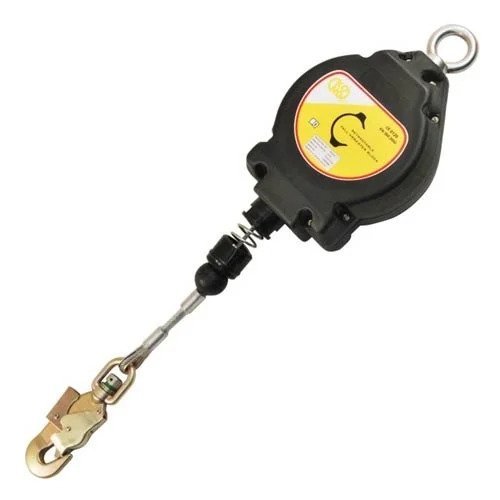Ensuring Workplace Safety: The Importance of a Fall Arrester

In any workplace where heights are a factor, ensuring the safety of workers is paramount. The use of a fall arrester is a critical component in the suite of safety measures designed to protect workers from potentially fatal falls. These devices, though often overlooked in favor of more visible safety equipment, play an essential role in maintaining a secure working environment.
- Understanding the Mechanism
A fall arrester is a device designed to stop a person from falling, mitigating the risk of injury. It works by anchoring to a secure point and connecting to the worker's harness. When a fall occurs, the device locks onto the line, arresting the fall and preventing the worker from hitting the ground. This rapid response can be the difference between a minor incident and a catastrophic accident.
- Importance of Regular Training
While the equipment itself is vital, ensuring that workers are properly trained in its use is equally important. Regular training sessions should be conducted to familiarize employees with how to correctly wear a harness, how to attach the fall arrester, and what to do in the event of a fall. Training should also cover routine inspections and maintenance of the equipment to ensure it is always in good working order.
- Routine Inspections and Maintenance
The integrity of a fall arrester is crucial for it to function correctly. Regular inspections should be part of the safety protocol. Look for signs of wear and tear, corrosion, or any damage that could compromise the device. Maintenance should be conducted according to the manufacturer's guidelines, and any faulty equipment should be removed from service immediately.
- Legal and Regulatory Compliance
Employers must comply with local and international safety regulations regarding fall protection. These regulations often specify the type of fall arrester that must be used and the conditions under which it should be deployed. Adhering to these regulations not only ensures the safety of employees but also protects the company from legal repercussions.
- The Psychological Impact on Workers
Knowing that their safety is taken seriously and that effective measures like fall arresters are in place can significantly boost worker morale. When employees feel safe, they are more likely to perform their tasks efficiently and with confidence. This positive work environment can lead to increased productivity and reduced turnover.
- Selecting the Right Equipment
Choosing the appropriate fall arrester for a specific job is essential. Factors such as the height of the work area, the type of work being performed, and the weight of the worker must all be considered. Employers should consult with safety equipment suppliers to ensure they are selecting the right devices for their specific needs.
- Case Studies and Real-Life Applications
Real-life case studies highlight the effectiveness of fall arresters in preventing accidents. For instance, construction sites, which are often high-risk areas for falls, have seen a significant reduction in incidents with the implementation of proper fall protection systems. By analyzing these case studies, employers can better understand the practical applications and benefits of these devices.
- Integration with Other Safety Systems
A fall arrester is just one component of a comprehensive fall protection system. It should be used in conjunction with other safety measures such as guardrails, safety nets, and personal protective equipment (PPE). Integrating these systems creates a multi-layered approach to safety, significantly reducing the risk of falls.
- Technological Advancements
Advancements in technology have led to the development of more efficient and reliable fall arresters. Modern devices are lighter, easier to use, and offer enhanced safety features such as automatic braking and self-retracting lifelines. Keeping abreast of these advancements can help employers provide the best possible protection for their workers.
- Cost Considerations
While the initial investment in quality fall arresters may seem high, the cost of not having them can be far greater. Workplace accidents can lead to significant financial losses due to medical expenses, legal fees, and downtime. Investing in proper safety equipment is a cost-effective measure in the long run.
- Promoting a Culture of Safety
Implementing and maintaining fall protection systems like fall arresters sends a strong message about the importance of safety in the workplace. It promotes a culture where safety is prioritized, encouraging employees to take personal responsibility for their own safety and that of their colleagues.
- Emergency Response Planning
In the event of a fall, it’s not just about having a fall arrester in place but also about having a robust emergency response plan. Workers should be trained on how to respond to a fall, including rescue operations and first aid. Quick and efficient responses can prevent further injuries and save lives.
Conclusion
The use of a fall arrester is a vital aspect of ensuring workplace safety in environments where there is a risk of falling. By understanding the mechanism, providing regular training, performing routine inspections, complying with regulations, and integrating the device with other safety systems, employers can create a safer work environment. The investment in such safety measures is not only a legal obligation but a moral one, ensuring that every worker returns home safely at the end of the day.
What's Your Reaction?











![Wireless Connectivity Software Market Size, Share | Statistics [2032]](https://handyclassified.com/uploads/images/202404/image_100x75_661f3be896033.jpg)




